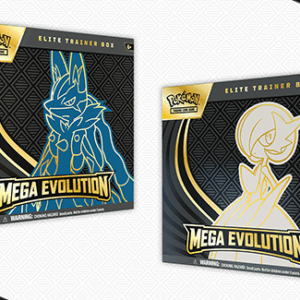In the realm of Pokémon collectibles, few things captivate the hearts of collectors quite like the iconic Base Set cards. As the dawn of Pokémon card collecting in 1999, these initial waves of cardboard heroics set the stage for a global phenomenon. It’s almost as if they possessed a magnetic aura, drawing each new generation of fans into the Pokéball’s imaginative vortex. Despite being old news, these nostalgic pieces of history continue to spark interest and debate, especially when it comes to recognizing the nuances between shadowless and shadowed cards. Let’s embark on a whimsical journey to sift through these legendary tangents of trading card minutiae.
To begin, it’s crucial to comprehend what “shadowless” signifies in collector-speak. Early editions of Base Set cards were printed in a manner that today might be referred to as flat—without the beguiling, 3D-shadow illusion present in later versions. Picture a picture with no depth—a minimalist embrace of simplicity, where the Pokémon art is framed with no gray bar shadowing the right side of the image box. This aesthetic decision bestows upon its beholder an effect almost akin to staring into an abyss of timeless nostalgia—an angelic simplicity perfectly paired with thin typography. Such is the characterization of the shadowless print style.
As the Pokémon craze swelled and printers presumably rejoiced in the card chaos carnival, a visual metamorphosis occurred. Enter the “shadowed” cards, also termed the Unlimited prints. These feature a soft gray shadow gracing the right edge of the art window, infusing a 3D-like presence and enriching the cardboard universe with welcomed depth. The evolution—from shadowless to shadowed—is a testament to the dynamics of design aesthetics as well as to printing technology of the late ’90s, an era defined by the dawning digital age.
The timeline of production serves as our magic map through this collector’s conundrum. First on the scene was the First Edition Base Set, draped in shadowless allure and decorated with a telltale black stamp—a regal statement that screams originality and commands a collector’s respect. Hot on its heels came the non-stamped shadowless cards—identical sans floating ink crest of distinction. These were quickly followed by the veritable tidal wave of Unlimited prints, marked by their shadowed contours and brighter hues, ensuring every schoolyard and playground under the sun was graced by their colorful touch.
For collectors, or those brave souls venturing into this electrified domain, understanding the scarcity of shadowless cards is tantamount to striking gold. While not as elusive as First Editions, they are certainly leagues ahead of the ubiquitous Unlimiteds in rarity stakes. This subtle distinction propels shadowless cards to higher market values, especially when featuring headline Pokémon like Charizard, Blastoise, and Venusaur—titans of the TCG world. Grading companies, the arbiters of card authenticity, readily acknowledge this illustrious lineage by marking cards as “Shadowless” on labels, a breach that exponentially elevates their value.
In the visual spectrum, telling shadowless from shadowed requires more than a keen eye; it demands an eye for the art detective’s finest details. Look to the right side of the art window: the absence of a gray shadow means shadowless bliss, while its presence suggests Unlimited domain. Beyond that, typography is key. Shadowless HP text appears in a finer, more delicate type, whereas the beefier typeface of the shadowed era looms larger and bolder. Border tones segue from shadowless’ lighter pastels to shadowed’s saturated richness. Again, these subtle cues serve as guideposts to the experienced eye, sifting through cards with the rigour of an art conservator.
Famed cards such as Charizard and Machamp offer practical examples to sharpen your shadow-seeking senses. The Holy Grail—the First Edition Charizard—donning its shadowless crest with pride, provides a yardstick against which the non-stamped shadowless Charizard proves rarer than its more common shadowed sibling. Machamp presents another scenario: early prints housed in the 2-Player Starter Set bear the shadowless layout, whereas later iterations shift to the shadowed stylings—just one of many delightful differences that entertain the learned enthusiast.
It is noteworthy that the shadowless phenomenon exists solely within the Base Set cosmos. The Jungle and Fossil sets, while enchanted and rich in their own right, never dwell in shadowless echoes. A UK variant, a last shadowed print hurrah with a “1999–2000” copyright line, may stir curiosity but firmly belongs to the shadowed league. And the riveting debate on thick versus thin stamps concerns solely First Editions, eschewing the shadowless conversation entirely.
While cataloging a collection from storied childhoods or newfound passion projects, wield the identification checklist as your trusty sidekick. Train your eye to detect the absence of shadows, lightly shaded borders, and tightly spaced, thin-type attributes that herald a shadowless presence. Should you encounter holos, particularly, juxtapose them with willing Unlimited counterparts—the shadow contrast should shine through unbiddingly.
In the gladiatorial arena of card value, rarity rears as king. First Edition Base stands as unconquered ruler, followed by shadowless’ commendable presence, while Unlimited basks in participatory glory. In the grand and mystifying arena of Pokémon card collecting, pulling a shadowless card is like drawing Excalibur, ready to knight your binder with irreplaceable charm. May this brief guide to shadowless versus shadowed cards provide clarity, and allow your Poké-obsession to flourish with newfound wisdom.





